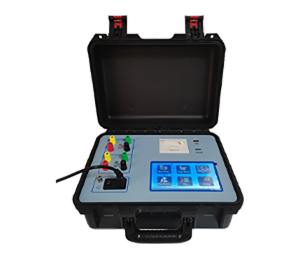 English
English



-
 Afrikaans
Afrikaans -
 Albanian
Albanian -
 Amharic
Amharic -
 Arabic
Arabic -
 Armenian
Armenian -
 Azerbaijani
Azerbaijani -
 Basque
Basque -
 Belarusian
Belarusian -
 Bengali
Bengali -
 Bosnian
Bosnian -
 Bulgarian
Bulgarian -
 Catalan
Catalan -
 Cebuano
Cebuano -
 China
China -
 China (Taiwan)
China (Taiwan) -
 Corsican
Corsican -
 Croatian
Croatian -
 Czech
Czech -
 Danish
Danish -
 Dutch
Dutch -
 English
English -
 Esperanto
Esperanto -
 Estonian
Estonian -
 Finnish
Finnish -
 French
French -
 Frisian
Frisian -
 Galician
Galician -
 Georgian
Georgian -
 German
German -
 Greek
Greek -
 Gujarati
Gujarati -
 Haitian Creole
Haitian Creole -
 hausa
hausa -
 hawaiian
hawaiian -
 Hebrew
Hebrew -
 Hindi
Hindi -
 Miao
Miao -
 Hungarian
Hungarian -
 Icelandic
Icelandic -
 igbo
igbo -
 Indonesian
Indonesian -
 irish
irish -
 Italian
Italian -
 Japanese
Japanese -
 Javanese
Javanese -
 Kannada
Kannada -
 kazakh
kazakh -
 Khmer
Khmer -
 Rwandese
Rwandese -
 Korean
Korean -
 Kurdish
Kurdish -
 Kyrgyz
Kyrgyz -
 Lao
Lao -
 Latin
Latin -
 Latvian
Latvian -
 Lithuanian
Lithuanian -
 Luxembourgish
Luxembourgish -
 Macedonian
Macedonian -
 Malgashi
Malgashi -
 Malay
Malay -
 Malayalam
Malayalam -
 Maltese
Maltese -
 Maori
Maori -
 Marathi
Marathi -
 Mongolian
Mongolian -
 Myanmar
Myanmar -
 Nepali
Nepali -
 Norwegian
Norwegian -
 Norwegian
Norwegian -
 Occitan
Occitan -
 Pashto
Pashto -
 Persian
Persian -
 Polish
Polish -
 Portuguese
Portuguese -
 Punjabi
Punjabi -
 Romanian
Romanian -
 Russian
Russian -
 Samoan
Samoan -
 Scottish Gaelic
Scottish Gaelic -
 Serbian
Serbian -
 Sesotho
Sesotho -
 Shona
Shona -
 Sindhi
Sindhi -
 Sinhala
Sinhala -
 Slovak
Slovak -
 Slovenian
Slovenian -
 Somali
Somali -
 Spanish
Spanish -
 Sundanese
Sundanese -
 Swahili
Swahili -
 Swedish
Swedish -
 Tagalog
Tagalog -
 Tajik
Tajik -
 Tamil
Tamil -
 Tatar
Tatar -
 Telugu
Telugu -
 Thai
Thai -
 Turkish
Turkish -
 Turkmen
Turkmen -
 Ukrainian
Ukrainian -
 Urdu
Urdu -
 Uighur
Uighur -
 Uzbek
Uzbek -
 Vietnamese
Vietnamese -
 Welsh
Welsh -
 Bantu
Bantu -
 Yiddish
Yiddish -
 Yoruba
Yoruba -
 Zulu
Zulu
oil dielectric test
Understanding the Oil Dielectric Test Importance and Procedures
The oil dielectric test is an essential evaluation method used primarily in the electrical engineering and power industry. This test determines the insulating properties of transformer oils and other related insulating materials. By assessing the dielectric strength of oil, engineers can ensure that electrical equipment operates safely, efficiently, and consistently under normal and extreme conditions. This article delves into the fundamentals of the oil dielectric test, its significance, and the procedures involved.
What is Dielectric Strength?
Dielectric strength refers to the maximum electric field a material can withstand without experiencing breakdown or failure. In the context of transformer oils, high dielectric strength signifies that the oil can efficiently insulate electrical components, preventing short circuits and system failures. The importance of dielectric strength lies in its role in protecting electrical systems from insulator breakdown, allowing equipment to function optimally and prolonging its lifespan.
Why is the Oil Dielectric Test Conducted?
Conducting an oil dielectric test is crucial for several reasons
1. Safety Effective insulation is paramount in preventing electrical accidents. By conducting this test, organizations can verify that their equipment is safe for operation.
2. Reliability Regular testing ensures that the insulating properties of transformer oil remain strong, minimizing the risk of equipment failure due to electrical breakdown.
3. Maintenance The oil dielectric test can identify contamination or degradation within the oil, prompting timely maintenance or replacement. This can help in mitigating downtime and repair costs.
4. Regulatory Compliance Many industries are subject to guidelines and regulations concerning electrical safety. The oil dielectric test serves as a means of compliance, ensuring that organizations adhere to established safety standards.
Test Procedures
oil dielectric test

The standard procedure for conducting an oil dielectric test involves several key steps
1. Sample Preparation First, a representative sample of oil is taken from the transformer or insulating system. It is essential that the sample is free from contaminants such as dirt, water, or other foreign substances that can impact the test results.
2. Test Setup The oil sample is placed in a testing apparatus designed for measuring dielectric strength. The most common setup includes a cup containing the oil sample with two electrodes immersed in the oil at a specific depth.
3. Applying Voltage During the test, a controlled voltage is gradually applied to the electrodes. The voltage is increased until the oil breaks down, resulting in a spark or arc between the electrodes.
4. Recording Results The voltage level at which breakdown occurs is recorded as the dielectric strength of the oil. This value is crucial for evaluating the oil's insulating properties.
5. Repeat Testing To ensure accuracy and reliability, the test is typically conducted multiple times, and an average value is derived.
Interpretation of Results
The results of the oil dielectric test are interpreted based on established standards, which can vary by region and industry. Generally, a higher dielectric strength indicates a more effective insulating oil. For example, a dielectric strength above 30 kV/cm is often considered satisfactory for transformer oils, while lower values may indicate contamination or degradation.
Conclusion
In conclusion, the oil dielectric test is a vital evaluation method that helps maintain the safety and efficiency of electrical systems. By ensuring that transformer oils possess adequate dielectric strength, organizations can prevent accidents, extend equipment lifespans, and comply with safety regulations. Regular testing and maintenance of insulating oils are fundamental practices for any industry relying on high-voltage electrical equipment. Understanding and implementing the oil dielectric test not only safeguards the infrastructure but also contributes to overall operational reliability and efficiency.
-
Testing Equipment Industry Sees Major Advancements in 2025: Smart & Precision Technologies Lead the WayNewsJun.06,2025
-
Applications of Direct Current Generators in Renewable Energy SystemsNewsJun.05,2025
-
Hipot Tester Calibration and Accuracy GuidelinesNewsJun.05,2025
-
Digital Circuit Breaker Analyzer Features and BenefitsNewsJun.05,2025
-
Benefits of Real-Time Power Quality Monitoring Devices for Industrial EfficiencyNewsJun.05,2025
-
Earth Fault Loop Testing in High-Rise Building Electrical SystemsNewsJun.05,2025



